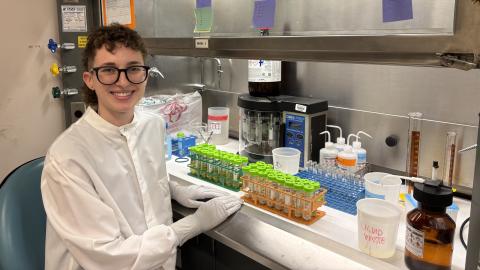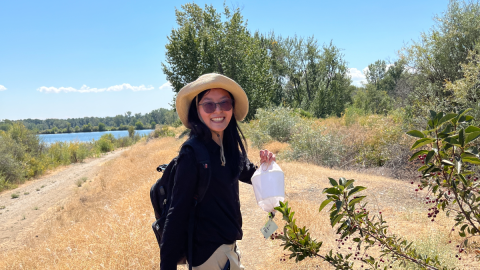Join author BJ Cummings for a virtual book launch on July 11 at 2 pm, hosted by the Duwamish Longhouse and Cultural Center. Register here
In the 1850s, Seattle's Duwamish River brimmed with salmon as it meandered over fertile plains stretching from Mount Rainier to Elliott Bay. The Native Duwamish people lived in longhouses along its banks, and early settlers farmed nearby.
By 2000, the Duwamish was so badly polluted that the US Environmental Protection Agency designated it a Superfund site—one of the most contaminated waste sites in the country.
The story of the Duwamish River's dramatic transformation and its central role in Seattle’s history is captured in a new book released this month, The River That Made Seattle: A Human and Natural History of the Duwamish.
We spoke with the book’s author, BJ Cummings, manager of community engagement for the University of Washington Superfund Research Program, part of the Department of Environmental & Occupational Health Sciences.
What motivated you to write this book?
I felt like I had to write this book because of how few people know that we even have a river in Seattle.
There are so many new arrivals here, but even people who have lived here their whole lives don't know that we have a hometown river. Seattle's development into what we think of as a world-class city has been built on the back of the river's natural resources and the human resources of the Duwamish Valley's inhabitants.
That story includes so many varied histories—seven generations of immigrant histories in addition to the history of its Native people. Those stories are essential to who we are as a city.
Another reason I wrote the book is more personal. It's because of the relationships I’ve developed with people who live, fish and play here, and, in particular, with James Rasmussen, who is Duwamish.
His family's history on the river goes back 10,000 years. James was not just supportive of my effort, but he had a sincere desire for the river's history to be told. He's been inspirational to me in moments when I thought I never was going to finish.
What was the most surprising thing you learned during your research?
Probably the thing that caught me most off-guard, because it's so different from published histories, is that there were Native Duwamish women who became land barons and the managers and financial drivers of their families.
In James’ family, it was his great-grandmother buying and trading and managing land for all the members of her family. Native people were forced into uncomfortable interactions with white settlers who had an entirely different concept of what land was and what wealth was.
In some cases, it was Native Duwamish women who took the lead on navigating that new reality.
What will it mean for the Duwamish River to become “a river for all”?
Before European white settlement, the Duwamish River existed in relationship with the Duwamish people, who didn't think of “owning” the river.
Today, Duwamish Valley community members represent more than 30 different language groups and come from hundreds of countries. There are dozens of interest groups laying claim in some way to a piece of this river that we have altered in the pursuit of those claims. The river continues to support Seattle through the economic and industrial activity that depends on it.
We need to balance those interests with the health and needs of people who rely on the river for basic sustenance, cultural and spiritual sustenance, green space, blue space and recreation.

What will it take to restore that balance?
Legally, the goal is to have a fishable river. Superfund cleanup and restoration itself will take us a long way toward reaching that goal, but it will take more than that.
At the moment, I don't think that most of the people actively involved in river cleanup truly believe that people will be able to feed themselves from the river again. They have to believe it's possible to make it happen.
At the end of the formal cleanup, we'll hit another juncture where communities that rely on the Duwamish for fish are going to have to fight for the next major leap forward. I have faith that we can do that. It's just going to take some time.




